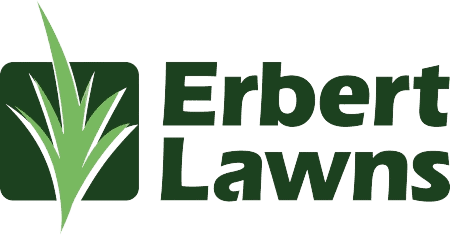
The older man while cleaning the garden
- Key Takeaways:
- January: Guard Against the Cold
- February: Prep for Spring
- March: Kickstart Your Lawn
- April: Enhance and Protect
- May: Optimize Health
- June: Strengthen Your Turf
- July: Maintain Through Heat
- August: Monitor and Adjust
- September: Prepare for Fall
- October: Autumn Care
- November: Wind Down
- December: Rest and Reflect
- Conclusion
- FAQs
Maintaining a vibrant lawn throughout the year requires a strategy as dynamic as the seasons themselves. At Erbert Lawns, we understand the changing needs of your turf from spring blossoms to winter frosts. This guide provides a tailored month-by-month plan to ensure that your lawn stays healthy and aesthetically pleasing no matter the weather.
Key Takeaways:
- Seasonal Planning: Staying ahead with a month-by-month guide ensures year-round lawn health.
- Proactive Care: Regular maintenance like aerating, fertilizing, and overseeding prevents major lawn issues.
- Equipment Upkeep: Keeping your tools in order can save time and enhance lawn care efficiency.
January: Guard Against the Cold
During the coldest month of the year, your lawn is mostly dormant but still needs attention to ensure it emerges healthy in the spring.
- Inspect for Pests: Check for any signs of rodent or pest damage, which are more prevalent in winter.
- Apply Anti-Desiccant: For certain grass types, an anti-desiccant can help prevent drying out and windburn.
February: Prep for Spring
As the end of winter approaches, start preparing for spring. This is a critical time for planning your lawn care for the upcoming growing season.
- Sharpen Tools: Ensure all your gardening tools are ready for spring. Sharp tools make for clean cuts that heal faster.
- Pre-Spring Clean-Up: Remove any debris, twigs, and rubbish that have accumulated over winter to prevent any mold or diseases.
March: Kickstart Your Lawn
March heralds the beginning of the growing season. Your lawn starts waking up as temperatures rise.
- Test Soil: Conduct a soil test to determine pH and nutrient levels, adjusting them as needed to promote optimal growth.
- Start Mowing: As the grass begins to grow, start your mowing for the season, keeping the blades high to avoid stressing the grass.
April: Enhance and Protect
With the full swing of spring, your lawn requires more frequent care to handle the rapid growth.
- Weed Control: Apply post-emergent weed control technologies to deal with any spring weeds that have started to sprout.
- Increase Watering: Depending on your region, begin increasing the watering schedule to support growth.
May: Optimize Health
May is often a high growth month, requiring a balance of nutrition, hydration, and disease prevention.
- Disease Prevention: Be on the lookout for signs of fungal diseases, which are common in late spring due to warmer temperatures and moist conditions.
- Mulching: As you mow, consider mulching your clippings to return nutrients to the soil without contributing to thatch buildup.
June: Strengthen Your Turf
June is about strengthening your lawn before the high stress of summer heat.
- Fertilize: Apply a slow-release fertilizer to give your grass steady nutrition throughout the summer.
- Grub Control: Apply preventive grub control to avoid damage from lawn pests later in the summer.
July: Maintain Through Heat
In the heat of summer, maintaining your lawn becomes about managing stress and optimizing water use.
- Early Morning Watering: Water your lawn in the early morning to reduce evaporation and allow water to reach the roots.
- Spot Treat Weeds: Treat weeds spotted during regular maintenance to prevent them from taking over.
August: Monitor and Adjust
As one of the hottest months, August requires careful monitoring and adjustment to keep your lawn healthy.
- Check Irrigation Systems: Make sure your sprinklers and irrigation systems are functioning properly and efficiently.
- Adjust Fertilization: If signs of stress are visible, consider an additional application of fertilizer to support robust growth.
September: Prepare for Fall
With the onset of cooler weather, September is the time to prepare your lawn for fall and the coming cold.
- Reseed Sparse Areas: Overseed thin areas to encourage density and reduce weed invasion.
- Begin to Reduce Watering: As temperatures drop, reduce the frequency of watering to adjust to your lawn’s changing needs.
October: Autumn Care
Autumn brings a new set of tasks to prepare your lawn for winter.
- Leaf Removal: Regularly remove leaves to prevent them from smothering the grass and creating a habitat for pests and diseases.
- Apply Fall Fertilizer: A final application of fertilizer will help your lawn store nutrients for the winter.
November: Wind Down
As the growth slows, November is about winding down and continuing to prepare for winter.
- Final Mowing: Conduct your last mow of the season, cutting the grass slightly shorter to prevent matting and fungal growth over the winter.
- Drain Irrigation: Fully drain your irrigation system to prevent freezing and damage during the winter months.
December: Rest and Reflect
With your lawn mostly dormant, December is a time for rest and reflection.
- Equipment Maintenance: Conduct thorough maintenance on all lawn care equipment, storing everything properly to prevent damage.
- Plan for Next Year: Review what worked well and what could be improved, and start planning your strategy for the next year.
This detailed calendar ensures that no matter the month, you have a clear plan of action for maintaining a healthy, vibrant lawn. From the quiet dormancy of winter to the vigorous growth of spring and summer, each season brings its own challenges and opportunities. you can keep your lawn looking its best all year long, ensuring that it remains a beautiful and enjoyable part of your home.
Ensuring your lawn’s health throughout the year can be a fulfilling endeavor. With each passing month, different tasks will help prepare your lawn for the next season’s challenges, contributing to a robust, resilient landscape. This proactive approach not only enhances the beauty and utility of your property but also increases its value and appeal.
From fertilizing to proactive pest management, each step in your lawn care calendar plays a crucial role in cultivating a healthy outdoor environment. As seasons change, your lawn’s needs change too, and staying attentive to these needs can mean the difference between a mediocre lawn and a flourishing green space.
By consistently applying the best practices in lawn maintenance, you not only maintain the aesthetic appeal of your property but also contribute to the ecological health of your community. A well-maintained lawn provides a habitat for wildlife, helps control temperatures, and reduces erosion, making your lawn care routine an important part of environmental stewardship.
Conclusion
For personalized advice, ongoing support, or to schedule a professional lawn care service, don’t hesitate to get in touch with Erbert Lawns. Let’s work together to ensure your lawn remains a vibrant, thriving part of your home throughout the coming year.
FAQs
How often should I water my lawn in the summer?
Frequent deep watering is recommended to encourage deep root growth.
When is the best time to apply fertilizer to my lawn?
Early spring, midsummer, and fall are crucial times for fertilizing to promote healthy growth and recovery.
What is the ideal mowing height for my lawn?
Generally, 2.5 to 3 inches is optimal, but raise the blade during hot months.
How do I know if my lawn needs aerating?
If your lawn feels spongy or dries out easily, it might need aerating.
Can I overseed an existing lawn?
Yes, overseeding is recommended in the spring or fall to maintain a dense, lush lawn.
What steps should I take to winterize my lawn?
Rake leaves, mow one last time, and apply a winter fertilizer to protect against cold.











